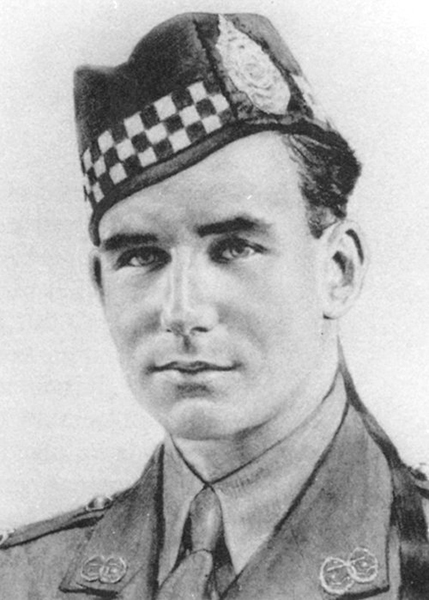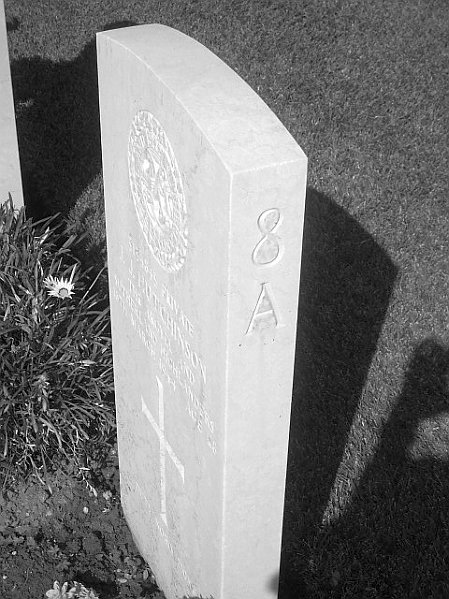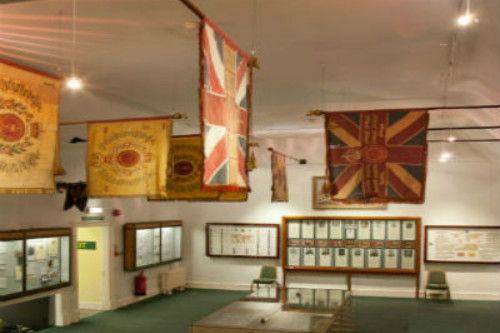Anderson, John Thompson McKellar "Jock"
- Date of birth:
- January 12th, 1918 (Hampstead/London, Great Britain)
- Date of death:
- October 5th, 1943 (Termoli/Campobasso, Italy)
- Buried on:
- Commonwealth War Cemetery Sangro River
Plot: VIII. Row: A. Grave: 44. - Service number:
- 126502
- Nationality:
- British
Biography
Major John Anderson served in North Africa and Italy. He distinguished himself in Tunesia while wounded.
Promotions:
23 March 1940: 2nd Lieutenant
?: WS/Lieutenant
?: T/Captain
?: A/Major
Do you have more information about this person? Inform us!
- Period:
- Second World War (1939-1945)
- Rank:
- Temporary Captain
- Unit:
- 8th Battalion Argyll and Sutherland Highlanders, 36th Infantry Brigade, 78th Infantry Division, British Army
- Awarded on:
- May 18th, 1943
"In recognition of gallant and distinguished services in North Africa."
----
"In command of 'Y' Company on 3 March 1943 at MUNTS GAP this officer led his company with great skill and determination and forces the Germans back to the reverse slope, pressing them closely in the rocks and cliffs to within 100 yards. The Company was unable to dislodge the enemy who were above them but held them and prevented them from threatening the flank of 'X' Company on the lower feature to their right.
Capt. Anderson led his men personally and appeared to them to bear a charmed life. He walked calmly amongst heavy enemy M.G. and mortar fire. One mortar bomb burst beside him and killed or wounded those immediately next to him.
During the fighting he took command of a section and personally led it to outflank the enemy position. He took over the Bren gun of this Section and effectively dealt with an enemy M.G. post in face of rifle and M.G. fire.
He recovered a L.M.G. dropped by the No. 1 who was wounded and restored it to be the section Commander fire, encouraging the men and dirseting/directing their further efforts. With Lieut. Fraser he crawled forward under enemy fire to rescue No. 2988920 Pte. B. Campbell who was lying in the open badly wounded. They pulled him into safety over rocky ground, a feat calling fro great exertion and patience under constant fire.
After dark he went forward with No 3065166 Cpl. Moody H. to recover wounded men close to the enemy positions. They recovered 7 men and also brought in 1 L.M.G., 1 T.S.M.G. and a 2" Mortar."
Certified True Statement by CSN. A.B. McIntosh Royal Montreal Regt (M.G.) Canadian Forces attached 8 A. & S.H:
"At MUNTS CAP on 3 March 1943 I was acting CSM of 'Y' Company 8 A. & S.H. with Captain J.T.M. Anderson. I never saw a man with such courage. He seemed to bear a charmed life and went about as cool as cucumber under M.G. fire and Mortar fire. I saw one mortar bomb burst almost at his feet and kill or wound the men next to him, but he came walking out of the smoke, just scratching his leg and walked on. He was an inspiration to everyone."
Certified true statement 21/3/43 (signature) Lt. Col. 8 A & S.H.
- Period:
- Second World War (1939-1945)
- Rank:
- Acting Major
- Unit:
- 8th Battalion Argyll and Sutherland Highlanders, 36th Infantry Brigade, 78th Infantry Division, British Army
- Awarded on:
- June 29th, 1943
Citation:
"For conspicuous gallantry and outstanding devotion to duty during the attack on "Longstop" Hill, Tunisia, on the 23rd April, 1943.
Over a period of five hours Major Anderson led the attack through intense enemy machine-gun and mortar fire. As leading Company Commander he led the assault on the Battalion's first objective, in daylight, over a long expanse of open sloping hillside and most of the time without the effective cover of smoke. Enemy infantry opposition was most determined, and very heavy casualties were sustained, including all other rifle Company Commanders, before even the first objective was reached.
On the first objective and still under continual enemy fire, Major Anderson reorganised the Battalion and rallied men whose Commanders, in most cases, had been either killed or wounded. The Commanding Officer having been killed, he took command of the Battalion and led the assault on the second objective. During this assault he received a leg wound, but in spite of this he carried on and finally captured "Longstop" Hill with a total force of only four officers and less than forty other ranks. Fire had been so intense during this stage of the attack that the remainder of the Battalion were pinned down and unable to advance until Major Anderson had successfully occupied the hill.
During the assault, he personally led attacks on at least three enemy machine-gun positions and in every case was the first man into the enemy pits; he also led a successful attack on an enemy mortar position of four mortars, defended by over thirty of the enemy. Major Anderson's force on the hill captured about 200 prisoners and killed many more during the attack. It is largely due to this officer's bravery and daring that "Longstop" Hill was captured, and it was the inspiration of his example which encouraged leaderless men to continue the advance."
Major Anderson’s Victoria Cross is on public display at the Argyll and Sutherland Highlanders Museum in Stirling Castle in Scotland.
"For conspicuous gallantry and outstanding devotion to duty during the attack on "Longstop" Hill, Tunisia, on the 23rd April, 1943.
Over a period of five hours Major Anderson led the attack through intense enemy machine-gun and mortar fire. As leading Company Commander he led the assault on the Battalion's first objective, in daylight, over a long expanse of open sloping hillside and most of the time without the effective cover of smoke. Enemy infantry opposition was most determined, and very heavy casualties were sustained, including all other rifle Company Commanders, before even the first objective was reached.
On the first objective and still under continual enemy fire, Major Anderson reorganised the Battalion and rallied men whose Commanders, in most cases, had been either killed or wounded. The Commanding Officer having been killed, he took command of the Battalion and led the assault on the second objective. During this assault he received a leg wound, but in spite of this he carried on and finally captured "Longstop" Hill with a total force of only four officers and less than forty other ranks. Fire had been so intense during this stage of the attack that the remainder of the Battalion were pinned down and unable to advance until Major Anderson had successfully occupied the hill.
During the assault, he personally led attacks on at least three enemy machine-gun positions and in every case was the first man into the enemy pits; he also led a successful attack on an enemy mortar position of four mortars, defended by over thirty of the enemy. Major Anderson's force on the hill captured about 200 prisoners and killed many more during the attack. It is largely due to this officer's bravery and daring that "Longstop" Hill was captured, and it was the inspiration of his example which encouraged leaderless men to continue the advance."
Major Anderson’s Victoria Cross is on public display at the Argyll and Sutherland Highlanders Museum in Stirling Castle in Scotland.
- Period:
- Second World War (1939-1945)
- Period:
- Second World War (1939-1945)
- Period:
- Second World War (1939-1945)
- Period:
- Second World War (1939-1945)
- Period:
- Second World War (1939-1945)
Sources
- Photo 1: findagrave
- Photo 2: findagrave
- Photo: Find A Grave Homepage
- - Page 2937 | Supplement 36071, 25 June 1943 | London Gazette | The Gazette
- Page 2208 | Supplement 36018, 14 May 1943 | London Gazette | The Gazette
- Home - victoriacross
- Recommendation for Award for Anderson, John Thomson Mackellar Rank: Temporary... | The National Archives
- Victoria Cross Reference
- The Register of the Victoria Cross - uitgegeven door This Engeland 1997 - ISBN 0906324270
- Special thanks to Stewart van The History of the Victoria Cross
- Officers of the British Army 1939-1945













